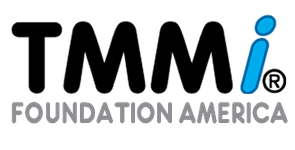The development of the TMMi has used the TMM framework as developed by the Illinois Institute of Technology as one of its major sources [Burnstein]. In addition to the TMM, it was largely guided by the work done on the Capability Maturity Model Integration (CMMI), a process improvement model that has widespread support in the IT industry. The CMMI has both a staged and continuous representation. Within the staged representation the CMMI architecture prescribes the stages that an organization must proceed through in an orderly fashion to improve its development process. Within the continuous representation there is no fixed set of levels or stages to proceed through. An organization applying the continuous representation can select areas for improvement from many different categories.
The TMMi has been developed as a staged model. The staged model uses predefined sets of process areas to define an improvement path for an organization. This improvement path is described by a model component called
a maturity level. A maturity level is a well-defined evolutionary plateau towards achieving improved organizational processes. At a later stage a continuous representation of the TMMi may become available. This will most likely not influence the content of the TMMi. It will ‘only’ provide a different structure and representation.
Other sources to the TMMi development include the Gelperin and Hetzel’s Evolution of Testing Model [Gelperin and Hetzel], which describes the evolution of the testing process over a 40-year period, Beizer’s testing model, which describes the evolution of the individual tester’s thinking [Beizer], research on the TMM carried out in the EU-funded MB-TMM project [V2M2], and international testing standards, e.g., IEEE 829 Standard for Software Test Documentation [IEEE 829]. The testing terminology used in the TMMi is derived from the ISTQB Standard Glossary of terms used in Software Testing [ISTQB].
As stated for defining the maturity levels, the evolutionary testing model of Gelperin and Hetzel has served as a foundation for historical-level differentiation in the TMMi. The Gelperin and Hetzel model describes phases and test goals for the 1950s through the 1990s. The initial period is described as “debugging oriented”, during which most software development organizations had not clearly differentiated between testing and debugging. Testing was an ad hoc activity associated with debugging to remove bugs from programs. Testing has, according to Gelperin and Hetzel, since progressed to a “prevention-oriented” period, which is associated with current best practices and reflects the highest maturity level of the TMMi.
Furthermore, various industry best practices, practical experience using the TMM and testing surveys have contributed to the TMMi development providing it with its necessary empirical foundation and required level of practicality. These illustrate the current best and worst testing practices in the IT industry, and have allowed the developers of the TMMi framework to extract realistic benchmarks by which to evaluate and improve testing practices.
